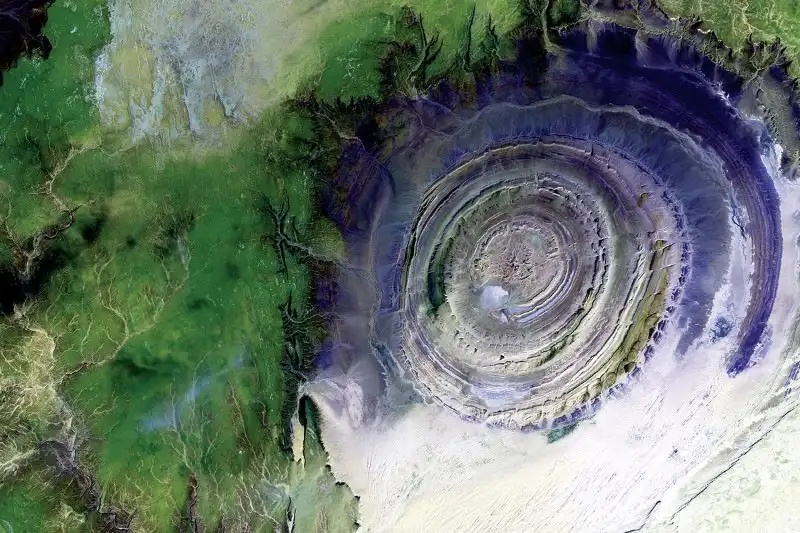Domes are majestic elliptical or circular bulges of layers of rocks with flanking beds stretching from the center to all directions. These elliptical structures form some scenic landscapes that extend for several miles in diameter. And one of the most unique domes that stand out from the space is the Eye of the Sahara.
The eye of the Sahara has been there for centuries, but it was first pictured by some Gemini astronauts in the 1960s. The astronaut used the eye of the Sahara as a landmark for tracking their landing sequences’ progress. They later used the Landsat satellite to take the photo of the eye of the Sahara and determine its height and size
What is the Richat Structure?
Generally, it’s a 25 miles wide eroded geological dome exposing layers of sedimentary rocks. These layers look like the igneous rock concentric rings that are exposed inside the dome. Its unique design is the main reason why it was among the first hundred heritage sites located by the IUGS.
Initially, they believed that it was an impact crater formed by an object that fell from space. But after further inspection, they discovered that it is earthly based. Other than its unique formation, it has a unique blue color which helps it stand out. In fact, it gets its name from its unique blue coloration that can be seen from space.
Why is the Richat Structure Blue?
Since the rock salt and gypsum can easily be dissolved by water, salt domes can develop in arid places like the desert. The dome has a bowl-shaped depression with rock layers dipping toward the middle. The basin serves as a unique sediment trap which increases in thickness with time.
Fortunately, the sediment of these domes has different colors with the Richat Structure’s unique color being blue. The bluish color is created by the sediments that might have stemmed from the lagoon or lake sediments.
Remember, the region wasn’t always a desert as it is today. The region was more temperate with plenty of water, which explains the blue color from the lake sediments that may have been there in the past.
During the temperate era, wind deposited some sandstone rocks at the base of the lakes and water. Then a volcanic eruption lifted the area surrounding the eye. The sand from the base of the lake was forced to the surface leaving the bluish color demarcating the eye of the Sahara.
Can the Blue Eye of the Sahara Vanish?
Since humans only visit the region to explore it, the Blue eye is not at any risk from humans. Plus, the region is sparsely populated, so the dome is not at any risk from us. But since it doesn’t receive rainfall, it is vulnerable to being affected by the natural elements.
The structure can be affected by erosion and further desertification in the future. Plus, the wind can blow more sand into the blue eye every day. So it may end up being covered by dust and sand in the near future.

